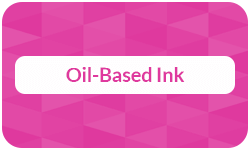
Printing, whether in the context of arts or conventional office printing, demands a lot of research on printmaking processes and materials. One crucial factor is the printing ink, as the quality of the finished product highly depends on what type of pigment and base are used. One type that is widely used in creative processes is oil-based ink, which will be explained in the following article.
Definition: Oil-based ink
Oil-based inks are a type of printing ink that uses oil as its base. In the past, petroleum-based oils were widely used, but due to economic concerns, many companies already offer various sustainable alternatives, such as oils based on linseed or soybeans. This type of ink is water-resistant and offers numerous applications due to its ability to stick to many surfaces.
High-quality color copies from just AU$0.28
- Choose from different paper formats & paper weights
- Configure finishing options & add any extras you need
- Easy online ordering process with delivery to your doorstep
Learn more!
Applications and limitations
Oil-based inks have various possible applications, for example, in offset printing or even Flexography printing. Their consistency allows the pigments to stick to numerous surfaces such as paper, plastics, metallic films, and more. The slow drying process allows for precision in printing, while the oil base ensures an even spread of the pigment, in contrast to water-based inks. Since they are smudge- and water-resistant, they are often used for packaging or envelopes that have a risk of being exposed to weather.
On the other hand, oil-based inks are mostly used in art contexts because of their vibrancy. Since they are pricier than water-based types, using them for daily printing is not profitable if it is not necessarily needed. Furthermore, the drying process is a lot slower, and after this, it is harder to get off surfaces it is not supposed to be on.
Advantages and disadvantages
Oil-based ink has many advantages and disadvantages to consider before deciding on using it.
Advantages
- Smudge- and water-resistant
- Vivid colors and long-term durability
- Eco-friendly if vegetable oil is used
Disadvantages
- Slower drying
- More expensive
- Hard to clean
A3 printing for AU$0.23 at BachelorPrint
- Vibrant A3 poster printing on premium paper
- Choose from a variety of finishes & extras
- Quickly print your A3 papers online
Learn more!
FAQs
Oil-based ink is a type of printing ink that has oil as its base, whether it is vegetable oil or petroleum-based oil. The pigment is solved in the base and forms an even layer on the medium printed on. Due to its nature, it is smudge- and water-resistant.
Oil-based ink can be used on many different types of medium, such as paper, cardboard, plastics, metallic surfaces, fabrics, and more. Thus, it is highly versatile in its applications. Another usage for it is on mail like envelopes of packages, since the water-resistant ink can withstand weather conditions to a certain range.
Disadvantages of oil-based ink are a slower drying process, as well as higher costs and a difficulty to get the ink off of surfaces it is not supposed to stick to. On the positive side, this type of ink is highly smudge- and water-resistant and produces vivid and long-lasting coloring. Furthermore, if vegetable oils are used for production instead of petroleum-based ones, they are also more eco-friendly and sustainable.
Generally, ink cartridges should, of course, be labelled. However, in case there might be issues, oil-based ink can be identified by its viscosity. It is characterized by a thickness of the liquid that resembles syrup. Furthermore, it will also not dissolve in water but float on top.